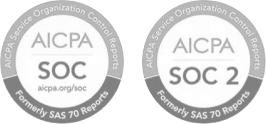Absence Management
Article Navigation
Absence management is a crucial part of maintaining operational continuity, supporting employee well-being, and staying compliant with labor regulations. It refers to the policies, processes, and tools an organization uses to monitor, track, and manage employee absences—whether planned or unplanned. Effective absence management ensures that employee time off is handled consistently and fairly, while also minimizing the impact on productivity.
Absence Management System
An absence management system is a digital platform or tool designed to automate the tracking and administration of employee absences. It centralizes leave requests, approvals, and records, enabling HR teams and managers to maintain visibility over workforce availability. These systems often include features like policy configuration, reporting dashboards, calendar integrations, and alerts to help organizations stay ahead of potential disruptions. A well-implemented system can reduce administrative overhead, improve compliance, and provide data-driven insights into absence trends across the organization.
Sickness Absence Management
Sickness absence management focuses specifically on tracking and managing absences due to illness. It typically includes procedures for reporting sickness, providing medical documentation, conducting return-to-work interviews, and monitoring long-term health-related absences. A clear and supportive sickness absence policy helps employees understand expectations while promoting a healthier workplace culture. It also ensures that employers are prepared to handle both short- and long-term illnesses in a way that is fair, legally compliant, and aligned with business needs.
Leave and Absence Management
Leave and absence management encompasses all types of employee time off, including vacation, parental leave, sick leave, bereavement, and other statutory or discretionary absences. Managing these various leave types can be complex, especially across multiple countries or jurisdictions with differing legal requirements. A comprehensive approach ensures transparency, consistency, and fairness across the workforce. It also supports strategic workforce planning by helping organizations anticipate staffing gaps and adjust workloads accordingly.
Absence Management Insurance
Absence management insurance is designed to help employers mitigate the financial impact of employee absences, particularly long-term or unexpected ones. This type of insurance can reimburse costs associated with hiring temporary replacements, paying sick leave benefits, or covering other related operational disruptions. For smaller businesses or those in highly specialized sectors, such insurance offers a buffer that helps maintain business continuity and manage risk more effectively.
Integrated Disability and Absence Management
Integrated disability and absence management (IDAM) brings together both short- and long-term disability programs with overall absence management under a unified strategy. Rather than managing these areas separately, IDAM offers a more holistic and efficient approach that supports employee recovery and return-to-work efforts. It helps reduce claims durations, streamline communication between stakeholders, and ensure compliance with regulatory requirements. For employers, integrated systems also provide clearer insights into absence drivers and the effectiveness of wellness initiatives.































 Back
Back